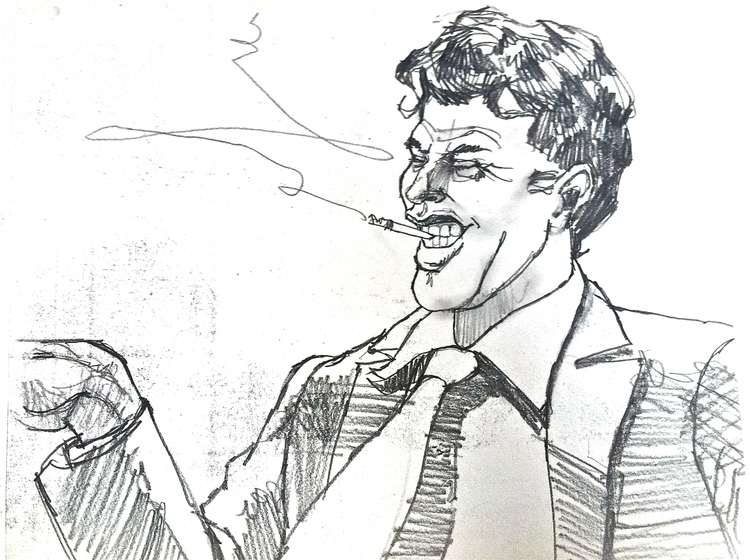With Michael Patterson rotoscoping at CalArts in 1981, Jack and I began to wonder if Patterson used the Lyon Lamb Video Rotoscope for "Commuter".
CalArts was one of Lyon Lamb's first customers, purchasing the LL Video Animation System (VAS) for their animation program. Jack was set on finding out how Patterson had made "Commuter", and the hunt for Michael Patterson began. The age of the Internet is amazing, really – in minutes, Jack found that Patterson was teaching animation at USC, so we had a starting point.
It turns out that Patterson had never heard of Lyon Lamb's video rotoscope, but he had used the VAS at CalArts. So how did Patterson make "Commuter"? Son of a gun, he built his own rotoscope! Less than two years after the Video Rotoscope was invented, Patterson had built his own film-based rotoscope.
Patterson approached Commuter knowing what he wanted to accomplish, so he built a drawing table that had a front surface mirror. With a single frame projector under the table, he used a controller to advance the film one frame at a time. To compensate for the reflection from the mirror, which inverted the image, he ran the film into the projector backwards.
It was an ingenious configuration, and he, along with Candace Reckinger, would use the same rotoscope in making a-ha’s “Take On Me”. It seems remarkable that the rotoscope created for a student film would become foundation for the most famous rotoscoped music video ever made. That's ingenuity for you!
After the interview, Patterson was kind enough to forward photos of his rotoscope in action – this during the making of “Take On Me” (notice the test drawings on the wall!). So enjoy these behind the scenes photos of making of "Take On Me"!
A-ha
